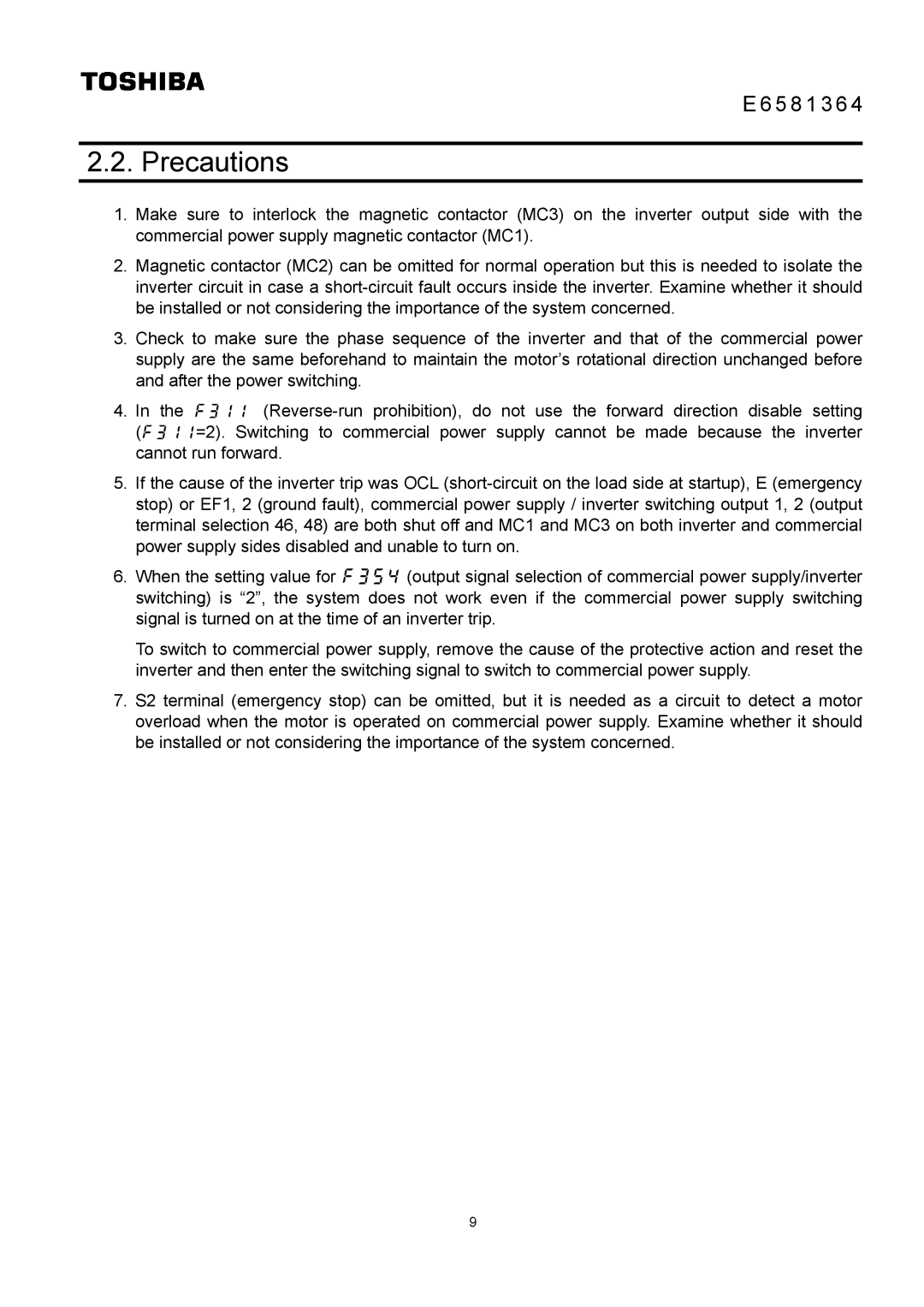
E 6 5 8 1 3 6 4
2.2. Precautions
1.Make sure to interlock the magnetic contactor (MC3) on the inverter output side with the commercial power supply magnetic contactor (MC1).
2.Magnetic contactor (MC2) can be omitted for normal operation but this is needed to isolate the inverter circuit in case a
3.Check to make sure the phase sequence of the inverter and that of the commercial power supply are the same beforehand to maintain the motor’s rotational direction unchanged before and after the power switching.
4.In the
5.If the cause of the inverter trip was OCL
6.When the setting value for (output signal selection of commercial power supply/inverter switching) is “2”, the system does not work even if the commercial power supply switching signal is turned on at the time of an inverter trip.
To switch to commercial power supply, remove the cause of the protective action and reset the inverter and then enter the switching signal to switch to commercial power supply.
7.S2 terminal (emergency stop) can be omitted, but it is needed as a circuit to detect a motor overload when the motor is operated on commercial power supply. Examine whether it should be installed or not considering the importance of the system concerned.
9
